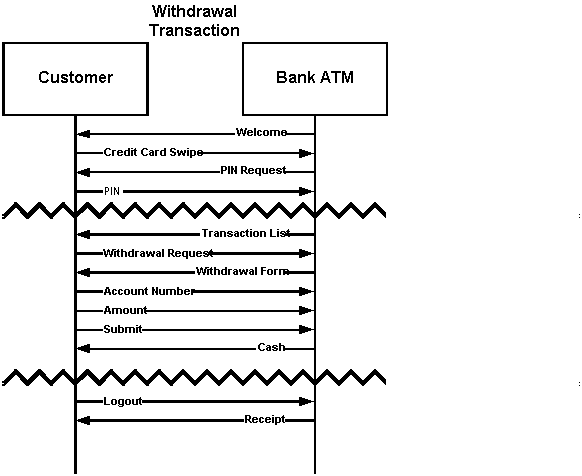Input and Output
This section is about how systems communicate with their environment.
Inputs and outputs or just I/O, contain the information shared among systems in an interaction.
The information can be expressed in many forms.
For example; there are smoke signals, electrical signals, hand signals, flags, liquid, thermal, light and many others.
The important thing is that some kind of information that the receiving system accepts is included.
I/O must be sent and received.
A message can be broadcast to many receivers simultaneously.
So each I/O has a sender and one or more receivers.
Waving at someone passing by, who is not looking at you, is not I/O.
Sequence Diagram
The purpose of a sequence diagram is to highlight the temporal relationships among systems involved in transactions.
A Sequence Diagram shows I/O as lines between Systems that are represented as boxes at the top of the page each with a single line coming out of the bottom.
The I/O is from vertical line to another where time is represented as moving down the page.
The following Sequence Diagram illustrates IO between an actor and a banking system.

IO sequences between the jagged lines can repeat as necessary.
Some I/O can be quite complex because it is an aggregation of many pieces of information sometimes referred to as messages.
Back | Next
Copyright Spidel Tech Solutions, Inc. 2004 All Rights Reserved. Updated:
7/11/2009 12:23:57 AM
Idx: 646 Site Design STS

 IO sequences between the jagged lines can repeat as necessary.
IO sequences between the jagged lines can repeat as necessary.